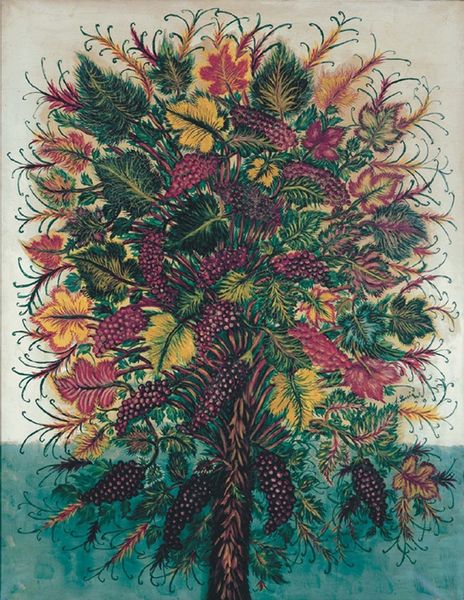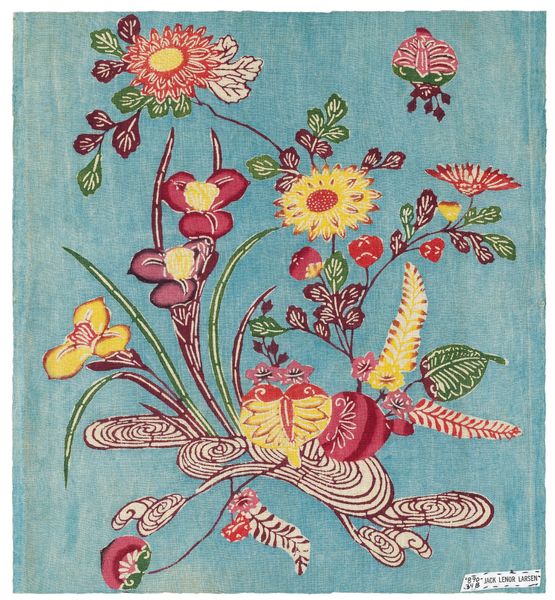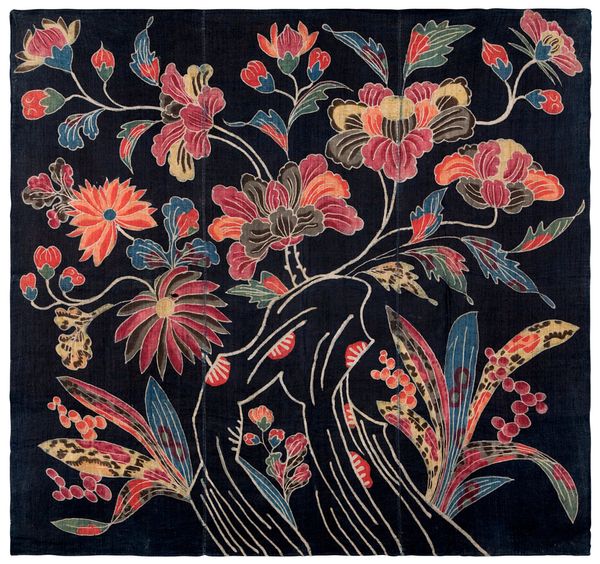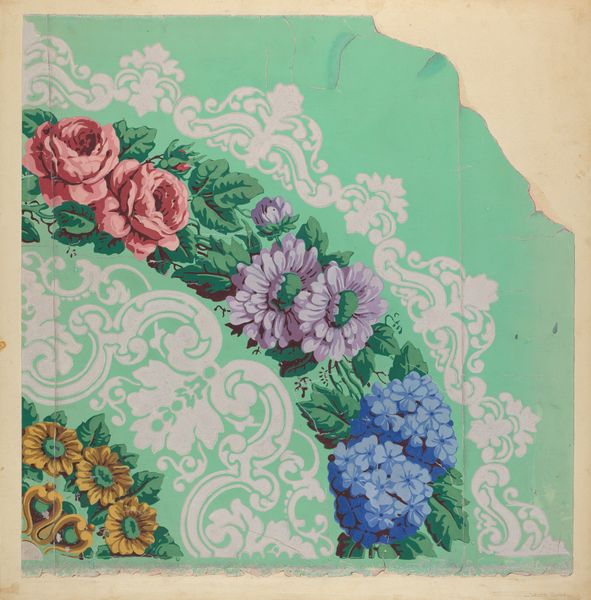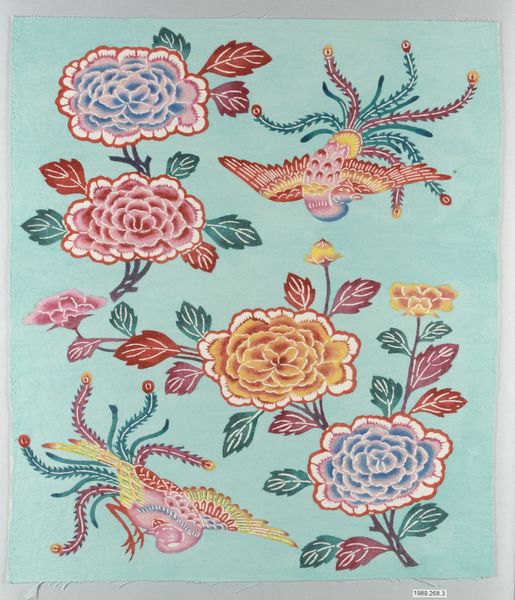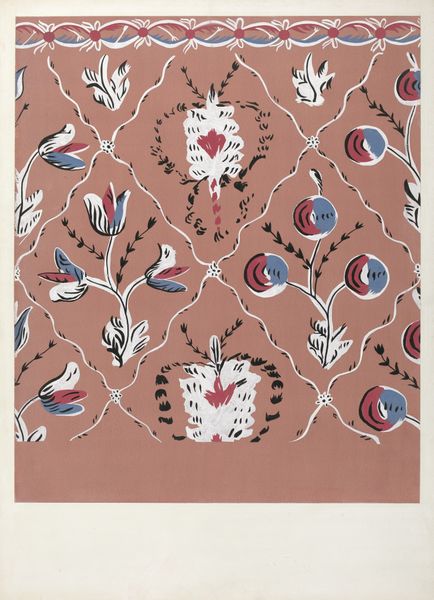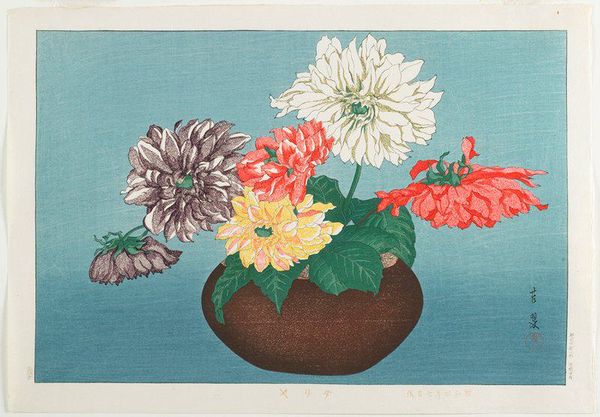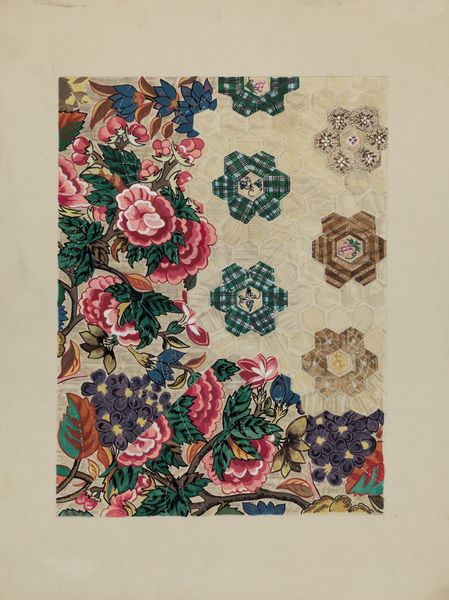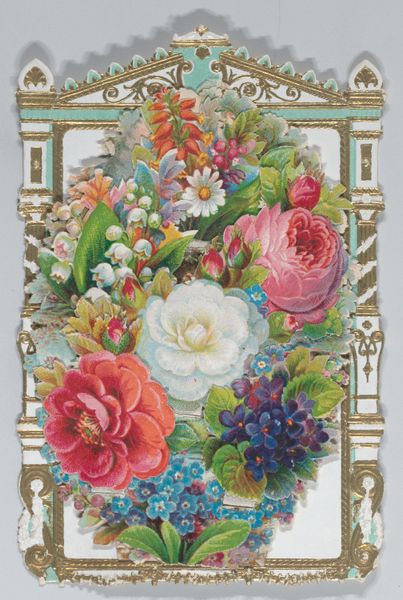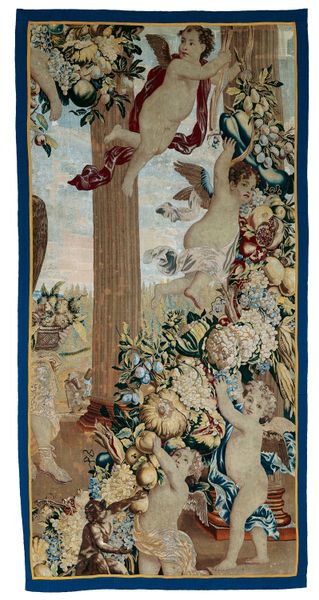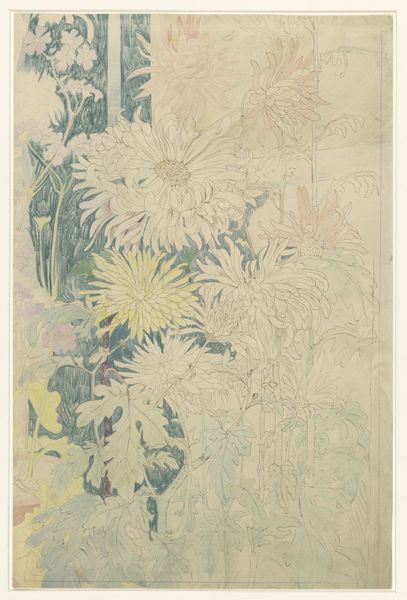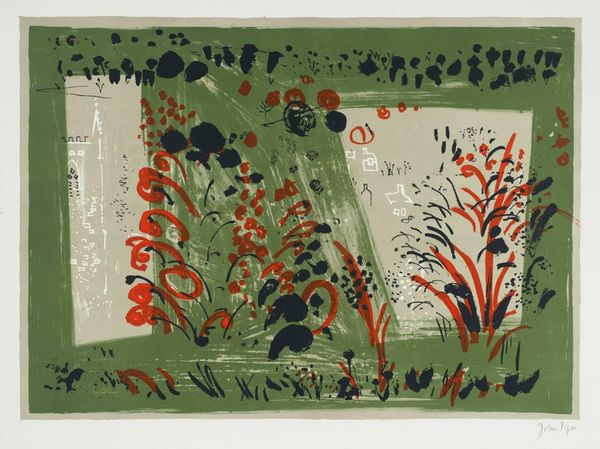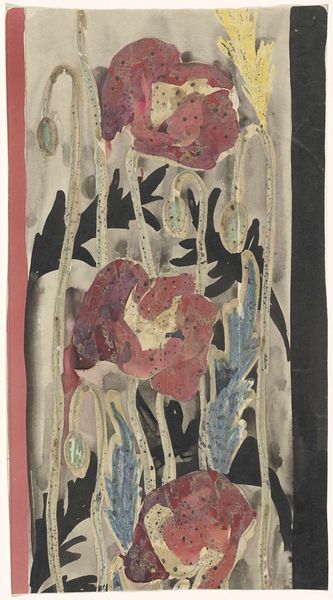
#
art-deco
# print
#
geometric
Dimensions: image: 401 x 300 mm sheet: 445 x 336 mm
Copyright: National Gallery of Art: CC0 1.0
Editor: Here we have Emil Ganso's "Flower Piece," a print from around the 1930s. There’s a really interesting flattening of space, almost a tapestry effect, and the shapes, though recognizable, are highly stylized. How would you describe what you see? Curator: Indeed. We might begin by noting the work’s commitment to planar composition. Observe how Ganso deploys a limited palette and simplifies forms, seemingly denying any illusion of depth. The flowers, vase, fruit, and even the backdrop merge into an intricate design. The artist directs the eye less toward a narrative, and more to the structure itself. How does the geometric pattern integrate with the botanical subjects? Editor: So, it's more about the relationships between shapes and colors than a realistic depiction of flowers? I noticed how the leaves in the background are as prominent as the blooms themselves. Curator: Precisely. We see a negotiation between representation and pure design. The semiotic potential of the flowers is largely suppressed by an arrangement emphasizing shape and pattern. Could you describe how Ganso uses color contrast? Editor: There's that contrast between the cool blues and greens with warmer yellows and reds, a strong counterpoint that animates the surface. Curator: It's almost a dance between these hues. Ganso’s intention, formalistically speaking, resides not in mirroring nature, but in establishing a cohesive visual language. Editor: This lens shifts my entire reading; I initially overlooked how he converted everything into a pattern. Thank you. Curator: It is rewarding to peel back such a lens, revealing fresh perspectives.
Comments
No comments
Be the first to comment and join the conversation on the ultimate creative platform.

